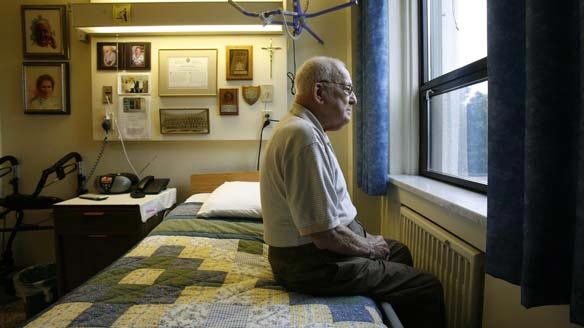
The Most Valuable Commodity in Health Care
In Oliver Stone’s 1987 film Wall Street, Gordon Gekko, the ruthless corporate raider played by Michael Douglas, explains that when picking stocks, “the most valuable commodity I know of is information.” This same mantra should apply when it comes to the serious business of making health care decisions — but too often that advice goes unrecognized by Canadians.
What then is the origin of the information used by Canadians in shaping their opinions — and making their choices — about health care? Generally speaking, there is no single, one-stop source that Canadians uniformly consult. Wendy Nicklin, the President and CEO of Accreditation Canada, an organization which functions at arm’s length from government, develops standards and assesses health care providers to help them to improve their performance, puts it this way:
“Canadians get their health care information from many different sources. Some of these include health care professionals, such as family physicians and nurses, as well as family members, friends, the media and the Internet.”

Jeffrey Simpson, The Globe and Mail’s national affairs columnist and longtime health care analyst, maintains that some sources have a greater presence than others in shaping Canadians’ thinking about health care. Simpson claims that, “Most information that Canadians get on the subject of health care comes from their physicians or other medical persons such as pharmacists, nurses or nurse practitioners.” Not surprisingly, there seems to be a consensus among health care providers and the general populace that physicians and other medical professionals are the most reputable sources of health care information. But with facilitated access through smartphones and tablets, the Internet is fast becoming an important source of health care information. And this trend is having an impact on patients and their relationship with their health care provider.
Nicklin sheds some light on how Canadians’ greater use of the Internet as a health care information search tool is affecting the time-honored patient-physician relationship. She explains that because of the easy accessibility to a wide array of information online, “Many Canadians go to their physician armed with a lot of information.” However, she points out that they tend to do this “without knowing whether the information is credible or applicable to their clinical situation.” Simpson has noticed a similar trend: “Some Canadians go on to the Internet and pull down information about whatever they think ails them and other information pursuant to what other medical personnel tell them.”
Nicklin also is quick to point out that: “Some members of the public are arriving [at their physicians’ office or other medical institutions] with some preconceived notions of what they’re dealing with, [and this] creates a reality where the public is coming in equipped with what they believe is accurate information or knowledge; [yet] that information may have actually led them down an incorrect path.” Simpson expands upon this by explaining that: “Some physicians and medical practitioners are cautious about having their patients search the Internet prior to having the physicians themselves conduct the appropriate medical tests and, therefore, make a traditional medical diagnosis.” This is because it can be difficult for the average Internet user to understand the complicated medical information on some websites and to differentiate between applicable information and that which is not.
In that light, like Simpson, Nicklin is adamant that it is the physician or health care practitioner who should decide if the information the patient brings is indeed relevant to their situation, and what the diagnosis is.
Information alone can be as misleading as it is helpful and can have dangerous consequences in the medical profession as Nicklin and Simpson point out. Nicklin explains that: “Misinformation can result in delay of treatment and can lead to unnecessary fear and anxiety in a patient.” Simpson says that physicians are aware of these dangers: “They are more aware of the fact that there is all this information out there about medical problems, diseases and remedies, and are aware that patients can be more demanding than in the past.” But patients’ demands are not always properly aligned with appropriate treatment. Increasingly, physicians are noting that an Internet-based self-diagnosis leads to a firm belief (on the part of the patient) that the illness was caused by a certain condition, while the physician knows from experience and rigorous training that this is not so. Simpson describes his solution to this problem by reasoning that physicians should conduct a proper, traditional, “comprehensive” diagnosis and then (and only then) the patient should go to the Internet to learn more about the results and possible treatment options that they would like to pursue with their health care provider.
At the end of the day, Nicklin captures the essence of the challenge associated with the unbridled use of the Internet as a source of information for Canadians’ health care decisions: “Human nature leads us to look for additional information to guide us and to clarify our thinking, but it’s important to recognize that the information may not be accurate or relevant.” Nicklin justifiably warns us all that: “Until an appropriate assessment is done by a health care practitioner, the information being sought from other sources may be as misleading as it is helpful.”
Top Photo: Projects Abroad (http://www.projects-abroad.org/press/high-resolution-photos/)











